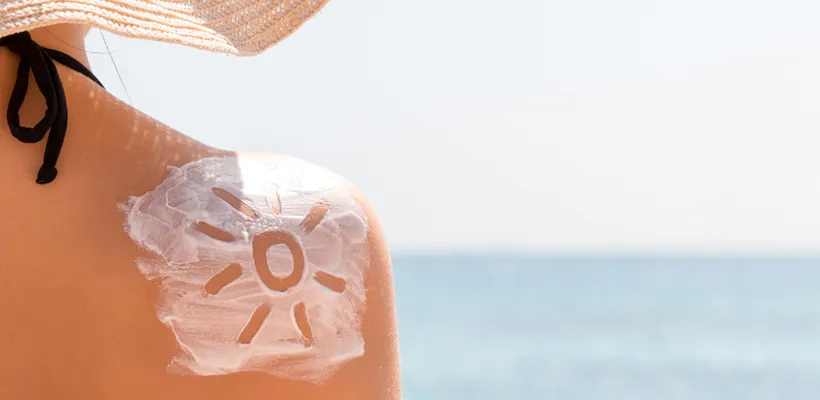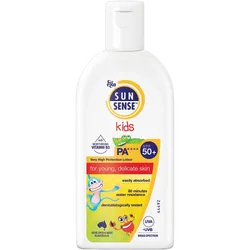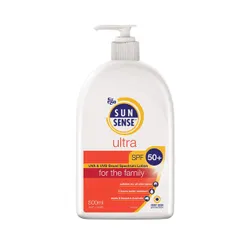Different Types of Sunscreen and How To Choose

Published: 15th June, 2022 in: Sun Care
As we enter into the summer months, although the UK may not have the highest temperatures, it is still essential to ensure our skin is protected from the sun’s UV rays. There is an ever-increasing range of types of sunscreen on the market nowadays, which can make it trickier to decide which is right for you.
Weldricks Pharmacy has put together a guide to the two main types of sunscreens, their pros and cons, and key factors to consider when deciding on the right sunscreen product for your skin.
What are the two types of sunscreens?
The two types of sunscreens are chemical and physical sunscreen. Both of these types work by adding a filter to prevent harmful UV rays from getting to your skin and causing damage, however, they work in slightly different ways to achieve this.
Chemical sunscreens, otherwise known as synthetic sunscreens, are those that are absorbed into the skin and are usually thinner in substance than physical sunscreens, meaning they are often used in sunscreens specifically designed for the face.
Chemical sunscreen works by converting the sun’s harmful UV rays into heat energy which is then released back into the air, to prevent the skin from harm. For this type of sunscreen to work effectively, it should be applied at least 20 minutes before you go into the sun so it has the chance to be absorbed into the top layer of your skin and do its job.
Physical sunscreens, also known as mineral sunscreens, are thicker in formula, and instead of being absorbed into the skin to protect it from UV rays, they sit on top of the skin to act as a barrier from the sun’s UV rays. Physical sunscreen simply works by simply shielding the skin from the sun and works instantly once applied to the skin.
Is chemical or physical sunscreen better?
There isn’t necessarily a right or wrong type of sunscreen to use on your skin. However, there are positives and negatives of using each depending on where on your body you are using it, how long you need your sunscreen to last and how easy you need it to be to apply.
Physical sunscreen pros and cons
Pros
- Effective immediately for sun protection after application.
- Contains less harsh ingredients.
- Leave a white cast on the skin making it easy to identify where you have applied sunscreen and avoid missing any spots.
- Suitable for sensitive skin as it doesn’t absorb into the skin.
Cons
- Requires regular reapplication throughout the day. Due to physical sunscreen resting on top of your skin instead of being absorbed, it can be washed off, wiped or sweated off easily so needs to be reapplied.
- It leaves a white cast on the skin which may not be desirable for some people who prefer their sunscreen to be invisible or undetectable.
Chemical sunscreen pros and cons
Pros
- Usually lightweight and absorbs into the skin leaving no sticky or thick residue on the skin’s surface.
- Lasts for a long period without the need for reapplication. Popular for uses such as when exercising outdoors or instances where you need your sun protection to last for a longer period without needing to be reapplied.
- Less product is needed to offer protection.
Cons
- Allows some UVA exposure due to the sun having to penetrate the skin slightly to reach the sun-blocking chemicals.
- Allows planning and care to apply it at least 20 minutes before going into the sun.
- Can be irritating to sensitive skin or skin that becomes easily congested due to it having to be absorbed into the skin.
How to choose the best type of sunscreen for your skin
As mentioned, there is no specific type, brand or formula of sunscreen that is best for use. Despite this, there are various factors to consider when choosing a sunscreen that is suitable for your skin type and purpose, including:
1. Ingredients
If you have sensitive skin or are buying sunscreen for children, it’s important to check the ingredients list. The FDA regulates sunscreens and their ingredients to make it easier to shop for those that are safe for us. Two main ingredients approved by the FDA to look out for in physical sunscreens are Zinc Oxide and Titanium Dioxide. You can read our blog post on sunscreen ingredients to avoid for more insight on this.
2. Formula
Consider the formula of your sunscreen and which will be easier to apply effectively. For example, spray sunscreens can be quicker to apply but may lead to patches being missed if not done correctly, whereas lotions allow you to more easily ensure that you cover all the necessary areas of skin. There are pros and cons to all types of formulas, however, whichever you choose, it’s important to apply sunscreen liberally and take care not to miss any spots.
3. Usage
You should also consider what you will be doing when wearing your sunscreen and the type of use it will be getting. For example, if you will be exercising outdoors in the sun you may be better protected by applying a chemical sunscreen which absorbs into the skin and is water-resistant, as physical sunscreen can be easily sweated off leaving you unprotected.
On the other hand, if you are going to be in strong direct sunlight, you may be better protected by applying physical sunscreen liberally to ensure there is a shield between your skin and the sun and apply this regularly, as opposed to relying on chemical sunscreen which requires some sun to reach your skin.
Stay protected from the sun with Weldricks Pharmacy
At Weldricks Pharmacy, we stock a wide range of sun care products including sun care for babies so you can enjoy being outdoors while staying safe. We stock a variety of types of sunscreen including physical lotions or chemical dry sprays so you can choose the best sun cream option for you and your skin type.
You can browse and purchase sunscreen online via our website or visit your local pharmacy branch.

